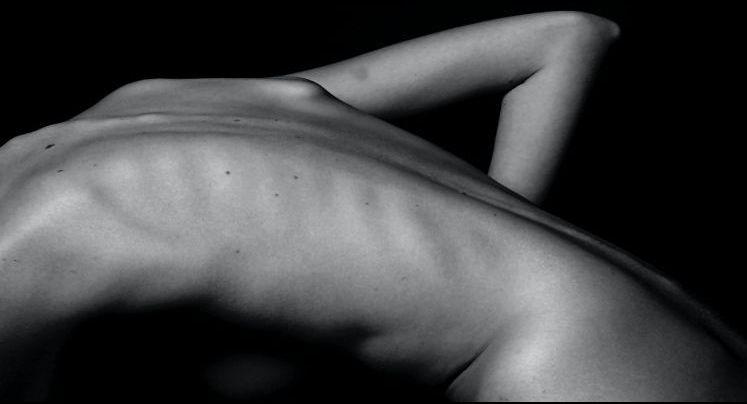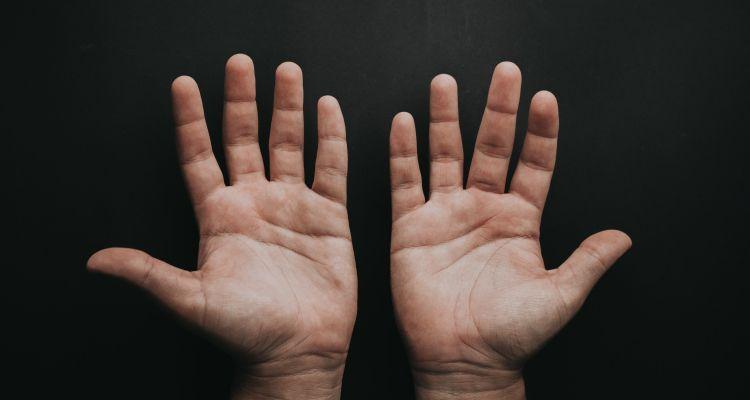
Pruritus - Causes, symptoms and treatment
Updated on 02. November 2023
Pruritus, also known as itching, is an unpleasant sensation on the skin. The term comes from the Latin prurire, which translates as "to itch". Itching can be a symptom of a variety of diseases and conditions. Unfortunately, in addition to itching, many sufferers also suffer from a sense of shame and live isolated lives. Appropriate diagnosis and treatment of pruritus can help to significantly improve quality of life.
Pruritus Brief overview:
- Causes: Irritations
- Symptoms: Scratching, rubbing, itching
- Prevention: PH Neutral Shower Creams, Sufficient Humidity
- Treatment: Creams
What is pruritus?
Pruritus is the medical term for a "permanent itch", this unpleasant sensation on the skin makes people want to scratch themselves all the time. If those affected give in to the itching, there is brief relief. The skin is stressed by the scratching and a vicious circle of itching and scratching develops. In severe cases, scratched areas and scars develop.
What are the different forms of pruritus?
A spontaneously occurring severe itch is first called acute. If it lasts longer than six weeks or recurs, the condition is considered chronic. People suffering from chronic pruritus may feel uncomfortable because of the constant itching. This can cause pruritus to have a significant social impact. Itching can also lead to sleep disturbance, which affects daily activities and work life.
What are the symptoms of pruritus?
Pruritus can cause a number of symptoms. Most importantly, it causes the uncomfortable feeling on the skin that scratching or rubbing can trigger. In more severe cases, pruritus can lead to skin changes such as redness, swelling, blistering or crusting. The skin of those affected is often prone to dryness. If the itching is indulged, scratched areas may be visible.
What does the skin look like with pruritus?
There are two different forms of pruritus. These have different skin conditions:
- Pruritus cum materia: In this case, the itching appears as an accompanying symptom of skin diseases such as atopic eczema, dermatomycoses, psoriasis or urticaria. The skin is reddened, scaly or cracked, depending on the previous disease.
- Pruritus sine materia: In these cases, the itching occurs without primary visible skin changes.
How does itching feel with pruritus?
Pruritus itching can feel different ways. It can be a slight tingling, stinging or burning sensation or it can be described as an uncomfortable pulling or squeezing sensation. Sometimes itching is felt as itching, scratching or scraping. There are also cases where the itching is so intense that it is experienced as painful. The type and intensity of itching can vary depending on the cause, location and severity of the pruritus.
What are the causes of pruritus?
Itching occurs due to stimulation of upper nerve fibres in the skin. This stimulation or irritation occurs through various messenger substances from the skin or blood. The stimulation is conducted from the nerves in the spinal cord to the brain. This creates the impulse to scratch the area. There are different messenger substances that can trigger itching. That is why the feeling in the areas with pruritus can be very different for each person.
What factors can trigger purism?
The emission of messenger substances such as histamine or serotonin can be triggered by various factors.
- Skin diseases: various skin diseases such as eczema, psoriasis, hives (urticaria), contact dermatitis, psoriasis.
- Systemic diseases: systemic diseases such as liver disease (e.g. cirrhosis), kidney disease, diabetes, thyroid disease, cancer or HIV/AIDS.
- Medicines: side effect of certain medicines such as antibiotics, antidepressants or painkillers of the opioid group and other medicines.
- Infections: Infections with viruses such as chickenpox, shingles and HIV or parasites such as head lice.
- Physical stimuli: Stimuli such as insect bites, [sunburn\]\(/sunburn/), cold or heat caused.
- Mental illnesses: Stress, anxiety, depression or other mental illness.
- Pregnancy: Pregnancy dermatitis may be accompanied by severe itching.
In some cases, pruritus can also be triggered by an interaction of several factors. If pruritus without skin changes is also present, the diagnosis is often made more difficult. Therefore, the cause of the itching cannot be determined for every patient.
On which parts of the body can pruritus occur?
Affected patients experience itching in different parts of the body. The complaints can occur on the entire body or only locally in a defined area. Two different forms are distinguished according to the occurrence of the disease:
- Generalised pruritus: The itching occurs all over the body and can have various causes.
- Localised pruritus: The itching only occurs on certain parts of the body, such as on the head (pruritus capitis), in the armpits, in the genital area (pruritus genitales and pruritus vulvae) or on the anus (pruritus ani).
What are the different forms of pruritus?
Depending on the triggering factors, different forms of pruritus are distinguished.
- Neuropathic pruritus: This itching is caused by damage or malfunction of the nerves that are responsible for the sensation of itching. An example of this is a herniated disc. In this form of pruritus, the itching usually occurs in a small, limited region.
- Psychogenic pruritus: This is itching that is triggered by psychological factors such as stress, anxiety or depression. Although the itching is real, its cause is not due to a physical illness. Psychogenic pruritus is thought to be triggered by the release of endorphins.
- Cholestatic pruritus: This form of pruritus is caused by liver and bile problems, such as hepatitis, liver cirrhosis. Those affected complain of severe discomfort, especially in the evening and at night. This is often associated with sleep disturbances. The itching is usually localised to the soles of the feet and inner surfaces of the hands.
- Pruritus senilis: The condition occurs mainly in older people due to skin ageing and loss of moisture. It may occur due to xerosis ([dry skin\]\(/dry-skin/)) or prurigo nodularis, a skin condition characterised by persistent, itchy nodules on the skin. The itching typically occurs on the extremities, head and neck and can lead to pain, sleep disturbance and impaired quality of life.
- Aquagenic pruritus: This is a rare type of itch that occurs after contact with water. Affected people experience severe itching on the skin when they shower, bathe or swim. The symptoms can start directly on contact with water, but also afterwards, and last for a maximum of one hour.
How is pruritus treated?
Due to the many causes of pruritus, treatment is very individual. It is particularly important to determine the cause of the chronic itching. If pruritus is triggered by medication, physical stimuli or diseases, an improvement can occur by eliminating the causes. Because itching usually subsides only very slowly, symptomatic therapy is also carried out. This is also indicated if the cause is unknown.
Which doctor helps with pruritus?
If you suffer from persistent or severe itching, you should see a doctor for diagnosis and treatment. Your first point of contact could be a general practitioner or a dermatologist (dermatologist), as they specialise in diagnosing and treating skin conditions that can cause itching. If the itching is due to a systemic disease, your doctor may refer you to a specialist, such as a gastroenterologist for liver disease or a nephrologist for kidney disease.
What general measures help with pruritus?
Regardless of the cause, a basic therapy is recommended for chronic itching. It is not only with pruritus senilis that the skin lacks moisture. Therefore, caring measures are an important component in the treatment.
- Cleansing: Do not shower or bathe too hot and only use mild soaps or syndets for cleansing.
- Nurturing cream: Treat with a moisturising and replenishing nourishing cream to strengthen the skin barrier with the ingredients urea, glycerine or lactic acid.
- Avoid contact with irritants such as detergents and wool
- Stress: use relaxation techniques such as yoga or autogenic training to help relieve stress
- Humidity: ensure sufficient humidity in rooms
What medicines work for pruritus?
The medicinal treatment of pruritus is very individually tailored to the patient by the attending physician. This depends on the cause and the individual impairment of the quality of life. In the case of severe itching and resulting skin damage, the following medications are effective as ointments or creams for the local treatment of the skin:
- Corticosteroids: relieve itching in skin diseases such as eczema, psoriasis or contact dermatitis.
- Calcineurin inhibitors: regulate the immune system and can thus reduce inflammatory processes.
- Local anaesthetics: Local anaesthetics such as lidocaine or pramoxine can be used for short-term relief of pruritus.
Systemic medications are used for generalised pruritus with itching all over the body. These are usually available in the form of tablets.
- Antihistamines: Antihistamines such as diphenhydramine, cetirizine or loratadine can help treat allergy-related itching.
- Immunosuppressants: can be used in the treatment of severe skin diseases associated with itching.
- Neuropathic pain medications: neuropathic pain medications may be used in the treatment of pruritus sine materia.
- Opioid antagonists: can be used in the treatment of pruritus in patients with opioid-related pruritus.
Some of these drugs can cause severe side effects. Therefore, they should only be used under medical supervision.
What home remedies work for pruritus?
There are various home remedies that help against severe itching. Especially proven in therapy with witch hazel, also called witch hazel. The distillate of witch hazel contains active substances that have a wound-healing, astringent and anti-inflammatory effect. Thanks to witch hazel, the moisture and fat content of dry skin increases. This relieves itching and at the same time nourishes the skin thanks to witch hazel.
- If the itching is severe, cool, moist compresses with yoghurt, black tea or a little vinegar can provide short-term relief for those affected. The skin must be well lubricated afterwards.
- An oatmeal bath soothes the skin and relieves itching. Simply add a cup of oatmeal to the bath water and soak for 15-20 minutes.
- Aloe vera: Aloe vera gel can help soothe the skin and relieve itching. Simply apply the gel to the affected area and let it soak in.
- Compresses and baths with tea made from chamomile blossoms are effective against inflammation and promote the healing of scratched skin areas.
Can pruritus occur in my dog?
Dogs can also suffer from itching, which is called pruritus. There are several causes of pruritus in dogs, including allergic reactions to food or environmental factors such as pollen, flea bites, skin infections and parasites such as mites. When a dog suffers from pruritus, it may show signs of itching such as constant scratching, biting or licking in certain areas, hair loss or skin changes such as redness or scaling. A thorough examination by a veterinarian can help identify the cause of the itch and appropriate treatment can be initiated. Depending on the cause of the pruritus, this may include medication, special diets or grooming and hygiene measures. In addition, you can care for your dog with home remedies. Witch hazel is also particularly suitable for animals. Poultices or ointments with witch hazel reduce itching and support the healing of open areas.

Hameli's vision
Go to Vision
Vaginal Fungus - Symptoms, Causes & Treatment
Go to Vaginal mycosis
Dry skin - What helps against it?
Go to Dry skin
Witch hazel - varieties, cutting, effect, & products
Go to Witch Hazel
Recognise and treat coccygeal fistula
Go to Coccygeal fistula
Anal fistula - symptoms, causes & treatment
Go to Anal fistula
Labial tear - Symptoms, Causes & Treatment
Go to Labial tear
Intertrigo - Cause, symptoms and treatment of the skin wolf
Go to Intertrigo
Anal abscess: symptoms, recognition, causes & treatment
Go to Anal abscess
Chickenpox - symptoms, vaccination, infection and treatment | Hamelis
Go to Chickenpox
Seborrhoeic Eczema - Symptoms, Causes & Treatment
Go to Seborrhoeic eczema
Anal fissure - Symptoms. Causes & home remedies
Go to Anal fissure
Vaginal dryness - symptoms, causes & treatment
Go to Vaginal dryness
Hives - Cause, symptoms and treatment
Go to Hives
Hamelis experts
Go to Experts
Rose lichen - symptoms, causes and treatment
Go to Rose lichen
Scars - treatment and removal
Go to Scar
Ringworm: Symptoms, Causes & Treatment
Go to Ringworm
Scabies - symptoms, cause and treatment
Go to Scabies
Treat anal eczema sustainably
Go to Anal eczema
Eczema - symptoms, causes and treatment
Go to Eczema
Contact allergy - symptoms and treatment
Go to Contact allergy
Treat stubborn nail fungus
Go to Nail fungus
Crabs - Intimate area, symptoms & treatment
Go to Crabs
Rosacea on the face - symptoms, causes and treatment
Go to Rosacea
Perioral dermatitis - symptoms, treatment & home remedies
Go to Perioral dermatitis
Skin fungus - cause, symptoms and treatment
Go to Skin fungus
Perineal tear - origin, degrees & causes
Go to Perineal laceration
Anal prolapse: symptoms, causes, treatment
Go to Anal prolapse
Skin rash - causes and treatment
Go to Skin rash
Genital herpes - woman, man & symptoms
Go to Genital herpes
Atopic dermatitis in children, adults and pets
Go to Atopic dermatitis
Angioedema - symptoms, causes and therapy
Go to Angioedema
Nappy dermatitis - cause and treatment of sore baby bottom
Go to Diaper rash
Sunburn - symptoms, duration & what helps?
Go to Sunburn
